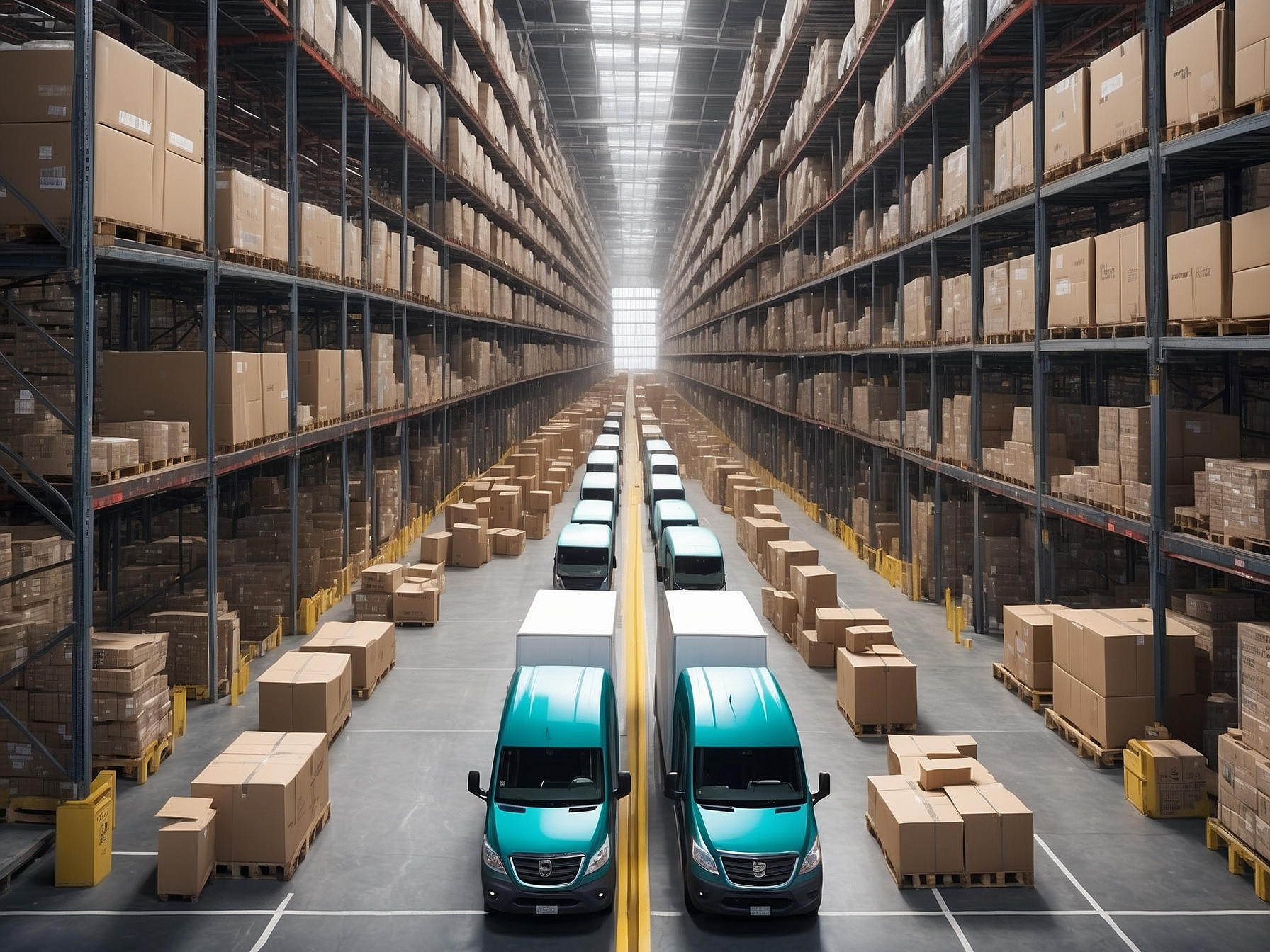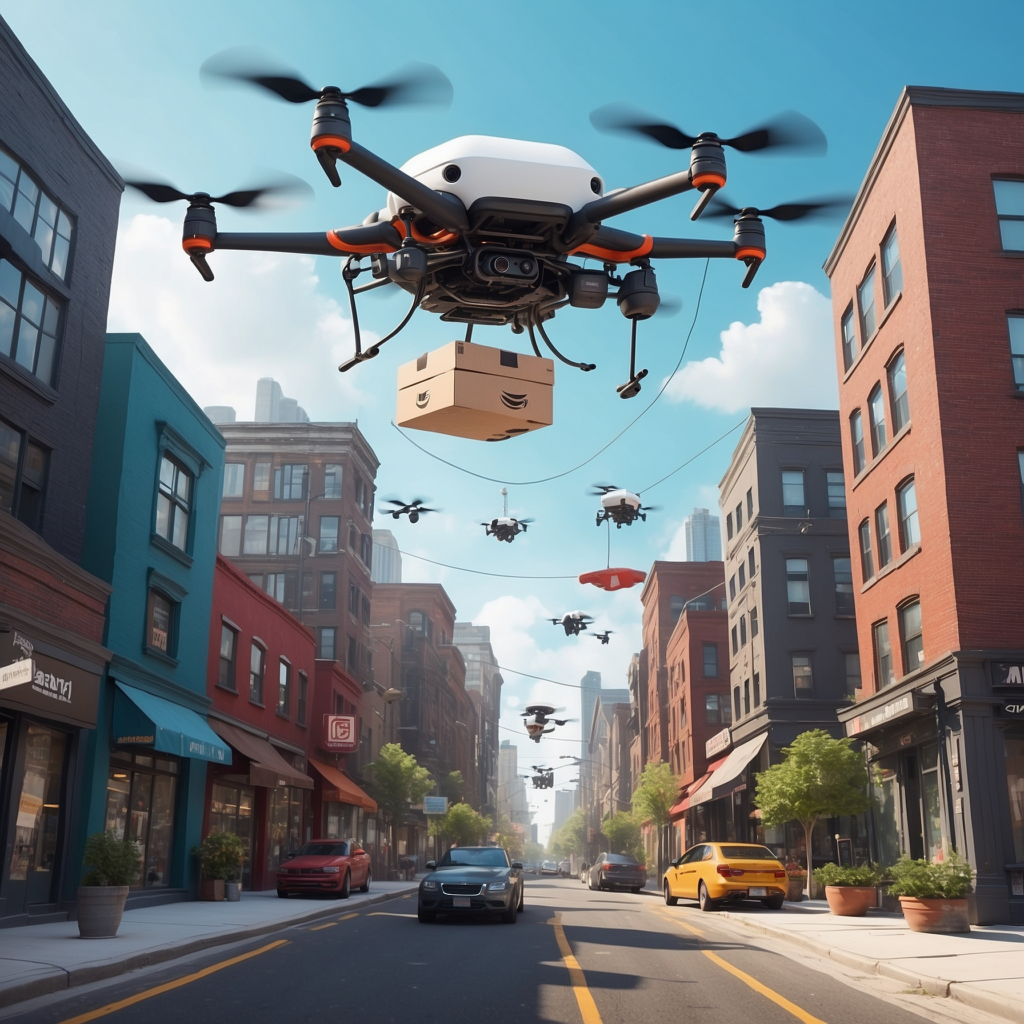You might think of Amazon as just a giant online store, but it’s more like a corporate octopus with its tentacles reaching into groceries, healthcare, smart home devices, and even drone delivery.
With its recent moves—like snapping up Whole Foods and diving headfirst into telehealth with One Medical—Amazon is not just changing the game; it’s rewriting the rulebook. This business model is known as vertical integration. In this business model, a company seeks to take over some or all of the steps in its supply chain.
Learn more about it here: Comprehensive Guide on Vertical Integration Strategy
But while this strategy has its perks, it’s not all rainbows and unicorns. From sustainability woes to regulatory roadblocks, there are plenty of challenges lurking in the shadows. Let’s see how small businesses can learn a thing or two from Amazon’s rollercoaster ride through vertical integration!
Examples of Amazon’s Vertical Integration
1. Acquisition of Whole Foods
Amazon splurged $13.7 billion to scoop up Whole Foods, and the goal was pretty straightforward: beef up its grocery game and make its physical stores more than just fancy warehouses. By snagging Whole Foods, Amazon got to use its trendy brand and prime city locations as new hubs for quick grocery deliveries, supercharging its Prime Now service in the process.
The Win:
So, how’d it go? Pretty darn well! Amazon saw grocery sales rocket up to $2 billion in 2017, which was a whopping 59% jump from the year before. It turns out, when you nail vertical integration, it can seriously boost your profits and cement your spot in the market.
The Hiccups:
Of course, it wasn’t all smooth sailing. Smaller vendors had a tough time getting their products on the shelves, and there were some hiccups with product availability because of new ordering processes.
Plus, meshing Whole Foods with Amazon’s logistics was a bit like trying to fit a square peg into a round hole. Amazon had to balance keeping Whole Foods’ high-quality vibe while cranking up its efficiency game.
So, if you’re thinking about diving into vertical integration, remember this: a clear and smart plan is key. Merging two businesses with different cultures and ways of working can get complicated fast!
2. Amazon Private Labels
Amazon decided to play the private label game as a vertical integration move, aiming to get a better grip on product quality, ditch the middleman, and rake in fatter margins by selling its own branded stuff directly.
By tapping into its massive pool of customer data, Amazon could spot hot products, whip up their own versions, and offer them at prices that kept customers coming back for more.
The Upside:
In some categories like Health & Household, Baby Products, Beauty & Personal Care, and Sports & Outdoors, Amazon’s private labels hit it out of the park. Sales soared and customer loyalty grew, giving Amazon a solid boost in these areas.
The Bumps in the Road:
But not everything went according to plan. Amazon’s market share in several categories took a nosedive, shrinking by 6% year-over-year in Q1 2024. The company saw declines across 16 out of 20 top physical goods categories.
To tackle this, Amazon slashed its private label roster from 45 brands with 158,000 products in 2019 down to fewer than 20 brands. Clothing brands took a hit too, with only 3 out of 30 surviving, and furniture lines like Rivet and Stone & Beam got the boot.
On top of that, smaller vendors had a tough time snagging shelf space, and there were hiccups with product availability due to new ordering processes. Amazon had to streamline its private label offerings, sticking mainly to popular items.
The intense competition from established brands and the struggle to consistently hit high customer expectations on quality made things even trickier.
Benefits of Vertical Integration to Amazon

1. Improving Efficiency and Increasing Profit Margin
Delivery Service Partner (DSP) Initiative:
Amazon hit the efficiency jackpot with its Delivery Service Partner (DSP) program, which kicked off in 2021. The idea? Let entrepreneurs start their own local delivery businesses.
This move not only jazzed up Amazon’s last-mile delivery game but also built a network of independent operators who handle deliveries like pros. The result? Lower costs and faster service speeds.
And guess what? Other companies are cashing in on this too. Uber, for example, has expanded from ride-sharing to Uber Freight, letting truck drivers link up with shippers and making logistics smoother.
DoorDash has done something similar by letting local restaurants use independent contractors for deliveries, boosting their delivery game and cutting down on their operational headaches.
These moves show how vertical integration can be a game-changer, streamlining operations and cranking up efficiency across different industries.
Investments in Technology:
Amazon’s 2020 scoop of Zoox shows how vertical integration can amp up efficiency with some next-level tech. By bringing Zoox’s self-driving magic in-house, Amazon’s not just aiming to jazz up its logistics but also speed up the roll-out of autonomous ride-hailing services.
With Zoox’s autonomous driving know-how now part of the family, Amazon’s looking to supercharge its massive logistics network, which boasted over 20,000 delivery trucks back in 2019. The dream? Slash shipping costs, which were a hefty $38 billion that year, by cutting out the need for human drivers.
Picture this: driverless trucks working 24/7 without needing a coffee break—talk about turbocharging efficiency and slashing delivery times!
Plus, this tech isn’t just about saving money. It’s also helping Amazon hit its green goals by fine-tuning delivery routes, which means less fuel and fewer emissions.
Morgan Stanley’s crystal ball says autonomous vehicles could save Amazon up to $20 billion a year. And it doesn’t stop there. With driverless trucks, Amazon could turn its freight brokerage service into a cash cow by selling excess truck space while still handling its own delivery needs.
It’s a game-changing move that could turn delivery costs from a big expense into a new profit stream!
2. Drives Competition and Innovations
Amazon Fresh
Amazon’s vertical integration strategy, particularly its expansion into grocery delivery with Amazon Fresh, has significantly disrupted the grocery market, driving competition and spurring innovation across the industry.
Intensifying Competition: Amazon’s entry into grocery delivery has forced traditional supermarket chains to rapidly adapt and enhance their online ordering and delivery capabilities to compete. Major grocers like Walmart, Kroger, and Albertsons have invested heavily in expanding their e-commerce offerings and last-mile delivery infrastructure to match Amazon’s convenience and speed. This increased competition has led to more options, faster delivery times, and lower prices for consumers.
Accelerating Innovation: Amazon Fresh has spurred innovation across the grocery sector. Retailers are experimenting with new fulfillment models like micro-fulfillment centers, dark stores, and in-store picking to optimize online order assembly.
Grocers are also leveraging advanced technologies like AI, robotics, and autonomous vehicles to streamline operations and reduce costs. For example, Kroger has partnered with Ocado to build highly automated customer fulfillment centers.
Disrupting Traditional Retail: Amazon’s grocery model is disrupting traditional supermarket economics. By controlling the entire supply chain, Amazon can potentially offer lower prices and higher service levels.
This is forcing brick-and-mortar grocers to rethink their store footprints, product assortments, and labor models to stay competitive. Some chains are downsizing stores, adding more fresh and prepared foods, and experimenting with micro-fulfillment centers in existing locations.
Raising the Bar on Convenience: Amazon has raised the bar on grocery convenience with features like Just Walk Out technology, Alexa voice ordering, and ultra-fast delivery. This is pushing competitors to innovate their own customer experiences.
Walmart, for instance, has piloted autonomous delivery vehicles and smart grocery carts. Albertsons has expanded its partnership with Uber to offer 30-minute grocery delivery in select markets.
Smart Home Products
A 2023 internal memo leaked from Amazon reveals ambitious plans to develop a new line of smart home devices designed to seamlessly integrate with Amazon Web Services (AWS) and other Amazon platforms like Alexa and Ring.
This strategic move leverages the company’s existing strengths in cloud computing, voice recognition, and e-commerce to create an interconnected ecosystem of products that enhance user experience and drive market competitiveness.
Integrating smart home devices with AWS provides Amazon with a significant competitive edge. AWS’s powerful cloud infrastructure can enhance the functionality of these devices by enabling advanced features such as real-time data analytics, personalized automation, and enhanced security protocols.
For instance, an Amazon smart thermostat could leverage AWS to optimize energy usage based on a homeowner’s habits, providing a level of customization and efficiency that is difficult for standalone devices from other manufacturers to achieve.
Also, seamless integration with Alexa allows users to control all their smart home devices through voice commands, reinforcing Amazon’s dominance in the smart home market.
This move intensifies competition in the smart home sector, challenging established players like Google Nest, Apple HomeKit, and Samsung SmartThings.
Amazon’s integration strategy enables rapid innovation and the ability to bring new features to market quickly, often at competitive prices. This not only forces competitors to innovate but also benefits consumers by pushing the industry towards more interconnected and intuitive smart home environments.
Amazon’s Vertical Integration Challenges
1. Regulatory concerns
Amazon’s vertical integration often places it at odds with regulatory bodies, particularly when it comes to innovative technologies that push the boundaries of existing laws and safety standards.
One prominent example is Amazon’s investment in drone delivery technology through its Prime Air initiative, which aims to revolutionize last-mile delivery by using autonomous drones to transport packages to customers within minutes.
While the technology holds immense promise for reducing delivery times, especially in congested urban areas, it has faced significant regulatory hurdles from the Federal Aviation Administration (FAA) and other aviation authorities worldwide. These regulatory bodies have raised concerns over air traffic safety, privacy issues, and the potential for accidents involving people and property.

Other companies working on drone delivery, such as Wing (owned by Google’s parent company Alphabet) and UPS, have also encountered regulatory challenges.
Wing had to overcome regulatory barriers to launch its first commercial drone delivery service in the U.S. in 2019. UPS received the first full Part 135 Standard certification from the FAA in 2019, allowing it to operate a drone airline and expand its drone delivery service.
Despite these challenges, Amazon has made progress in recent years. In 2022, the company began drone delivery trials in the U.S. cities of College Station, Texas, and Lockeford, California. These tests have shown promise in reducing delivery times in urban areas.
Although Amazon has made progress, conducting successful tests and obtaining limited approval for commercial deliveries in some regions, it still faces ongoing challenges in scaling this operation globally due to varying regulations in different countries.
2. Ethical Concerns
When Amazon scooped up One Medical in 2023, it was a big leap into the healthcare world. But this move has stirred up a few ethical red flags:
Data Privacy:
One major worry is what Amazon will do with all that sensitive health data. Amazon claims they’ll keep it separate from their other business bits, but some folks are still sweating bullets.
There’s a fear that Amazon might use this goldmine of data to fire off personalized product pitches or ads. Imagine your smart fridge suggesting a new health drink because it knows your medical history—creepy, right?
With Amazon’s knack for hoarding data from e-commerce, smart home devices, and more, they could end up with super-detailed profiles of everyone. That means if there’s a data breach, your private medical info could be at risk of getting exposed.
Market Dominance:
Amazon’s got the muscle to shake up the healthcare scene pretty fast, thanks to its tech power and deep pockets. But this also raises fears of market monopolies and fewer choices if Amazon uses its size and data to squash the competition.
Some critics are worried that Amazon’s foray into healthcare, on top of its e-commerce and tech dominance, could give them way too much control over consumers. There’s a concern that they might push their own products and services even if they’re not the best fit for patients. Yikes!
3. Sustainability Concerns
Amazon’s drive for efficiency in logistics and delivery is a bit of a mixed bag when it comes to sustainability. On one hand, controlling its own logistics lets Amazon speed up deliveries and keep customers happy. On the other hand, it’s also cranked up the company’s carbon footprint.
As Amazon’s fulfillment centers, air cargo ops, and delivery fleets have expanded to keep up with skyrocketing consumer demand, the environmental toll has raised eyebrows. With millions of packages flying out daily, the strain on natural resources and the spike in greenhouse gas emissions are clashing with consumers’ calls for greener practices.
To tackle this, Amazon has made a bold promise: net-zero carbon emissions by 2040, part of its Climate Pledge initiative.
So, what’s the game plan? Amazon’s investing big-time in green tech. They’ve ordered over 100,000 electric delivery vans from Rivian to cut down on fleet emissions. They’re also betting on solar and wind energy to power their data centers and fulfillment centers, aiming to run everything on 100% renewable energy by 2025.
But it’s not all smooth sailing. Making a massive global logistics network greener is no small feat—it’s expensive and complex. The company needs serious tech upgrades and hefty investments.
Plus, balancing fast growth with sustainability is tricky, and Amazon’s still working through regulatory hurdles, shifting consumer expectations, and the tech limitations of today’s green innovations.
Takeaways
- For solopreneurs, Amazon’s vertical integration offers a cautionary tale. While control is appealing, replicating Amazon’s model is unrealistic for small businesses. Instead, focus on niche markets and strategic partnerships where you can add unique value.
- Leverage Technology Wisely: Amazon’s investment in technology, from electric delivery vans to autonomous vehicles, highlights the importance of staying ahead with tech. Small businesses can benefit from adopting new tools and solutions that enhance efficiency, even on a smaller scale.
- Understand Your Market: Amazon’s ability to disrupt entire industries shows the power of understanding and leveraging market trends. Small businesses should keep an eye on industry changes and customer preferences to stay competitive and innovate effectively.
- Be Prepared for Challenges: Vertical integration isn’t all sunshine and rainbows. Amazon’s experiences with regulatory hurdles and integration difficulties show that expanding your business operations can come with significant challenges. Plan carefully, and be ready to adapt to unexpected issues.








